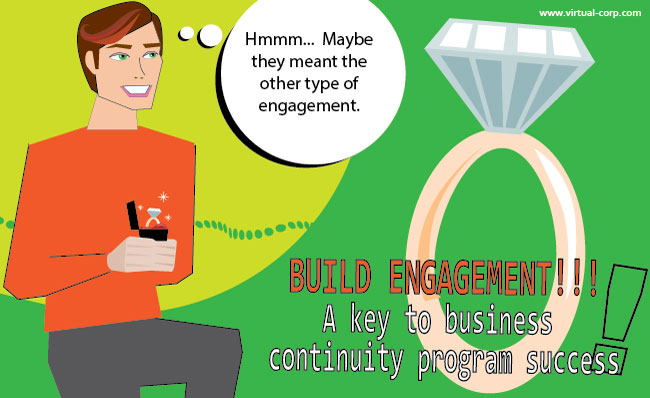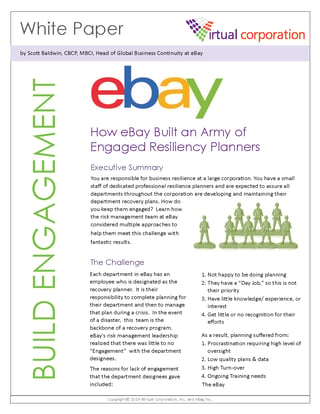3 Approaches to Build Engagement for Business Continuity Planning
organizational resilience, business continuity, building engagement

Building engagement is a challenge for almost every organization when it comes to business continuity planning. Sometimes it seems like it would be easier to do the whole plan alone, but we all know that in order to be effective, the organizational resilience plan needs to have input from all parts of the organization.
There are 3 approaches that risk managers and continuity managers consider when trying to build engagement. They are fear, framework, reinforce and support. There are benefits to all, but which approach has the most lasting and productive impact for building enterprise engagement of your business continuity planning process? Here are my thoughts on these 3 approaches. You can decide which works best for your program.
- Approach 1: Fear
- Appraoch 2: Framework
- Approach 3: Reinforce & Support
Approach 1: Fear
The Fear approach motivates by using an external, potentially horrible event, especially using events that have impacted the company in the past.
It can also use upcoming audits or audit findings to motivate.
This approach gets people’s interest and attention and generates conversation in the short term, but it does not last…
• After a couple of weeks, people forget
• They move on to more important matters
Fear is a good jump start but in the end has a short shelf life. Let's face it, for some people fear is a pretty powerful motivator.
Approach 2: Framework 
The framework approach is where the centralized corporate resilience group, tries to prescribe and define as much of the program as they possibly can. This includes creating policies, schedules and milestones as well as creating very clear instructional documents and developed time-lines for planning and testing.
This approach will typically improve long-term participation, however, for many, the milestones become the objective – in other words, completing the plan takes precedence over the quality of the plan. Many planners still continue to procrastinate and then rush low quality information into their plans.
The framework approach does not solve the overall problem, and by and large real engagement is still not achieved.
Approach 3: Reinforce & Support 
The first component of this approach is to “empower the planner.” Once empowered, make sure to address and remove any obstacles in the way of planner engagement. By spending time and energy in reinforcing and supporting planners instead of trying to scare or manage them, you will be able to cultivate truly engaged resiliency planners.
With reinforce & support, the risk management team no longer has to push departments heads to contribute. In fact, often times they will be pushing you – wanting to learn more, asking about certification and training. These are the people who stay on as planners year after year and who volunteer their planning expertise when moving on to other groups or even companies.
This is typically the approach I recommend to my clients.
CONCLUSION:
Are you challenged with building enterprise engagement for your business continuity program? Learn how the risk management team at eBay considered multiple approaches to help them meet this challenge with fantastic results in this free white paper by Scott Baldwin, CBCP, MBCI, Head of Global Business Continuity at eBay.
organizational resilience, business continuity, building engagement





